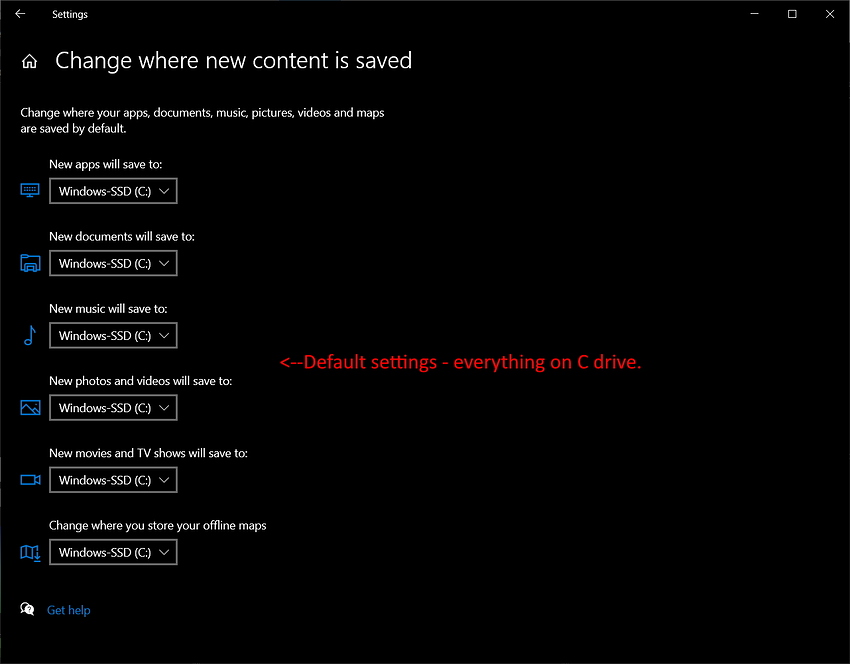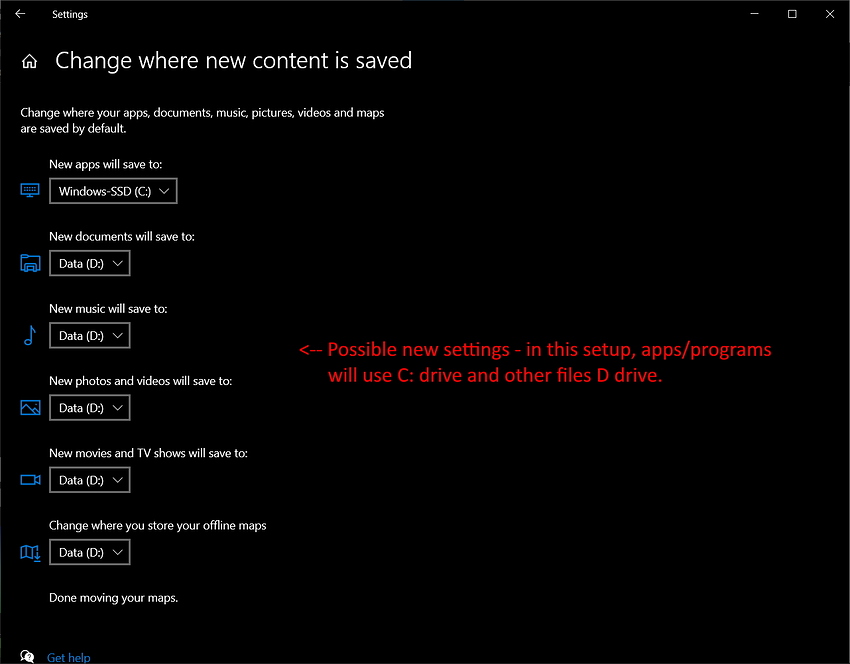On another forum recently, I observed a discussion about performance, with a 2 drive windows system (C:\ drive was an SSD, D:\ was an HDD with bigger capacity). The user had been loading images and the like to C:\ and programs and stuff, where possible, was installed on D drive, but then application logs were filling up what remained of C, and there ensued a lot of discussion about moving files, cleaning up logs, etc.
For what it’s worth, when I got my new laptop just as I bought into Topaz suite of products, I moved some things to the D drive, but in the the above discussion someone questioned why I didn’t use the Windows built-in ways of managing storage. Essentially, I’ve been around Windows 10 since it was in beta status, but always with a one hard drive system. My way worked for me, the suggested way also works and maybe easier to configure. Here I will outline both methods, with the assumption that you have a fairly updated installation of Windows 10 and some familiarity with navigating around it.
Method 1 (manual steps - you would need to do this for every folder home you want to move):
- Open windows File Explorer.
- Under “This PC”, where it lists Desktop, Documents, Downloads, Music, Videos, Pictures, choose a category folder (in this screenshot looking at Documents).
- Right-click and go to “Properties” and there will be several tabs across the top.
- Open the “Location” tab. By default, your documents are located at c:\Users\yourname\Documents.
- Change the path to d:\Users\yourname\Documents
- You have the option to “find target” or “move”. If you have documents in your home folder already and want to move to new location now’s a good time to do it.
- Click Apply… Click “OK”… Repeat for any other folders you want to move (Videos, Pictures, etc).

Method 2: (This would have been easier for me to do had I realized the settings were available… A shortcut to the first four steps below is to search for ‘storage settings’ and go directly to it).
- Click Start Menu…
- Click “Settings” gearbox.
- Click “System” icon.
- Click “Storage” on left panel.
- Click “Show more categories”.
- Scroll down to “change where new content is saved” and click on it.
- Note default locations for a variety of file types and/or programs.
- Change settings as desired to new locations.
In general, it has been my experience that a fair balance of performance is to leave windows and installation of programs to be loaded to C: if that’s an SSD, and to offload data to the D: drive if possible and IF you have more space there. If space is not an issue - or if you have multiple SSD or just hard drives then this may not be helpful except as a reference to know where these settings are stored.
I actually have a 500gb SSD and a 1TB HDD, and a 4TB external. So I backup/archive to external and cloud, and leave recent files on the D drive, but work locally on the C drive. If I were using something like Video Enhance AI I’d consider leaving videos on the SSD so as to have less I/O to a physical hard drive, but when evaluating the software I wasn’t thrilled with the performance even with a 6GB GTX Nvidia card and 16GB of system memory with a gen 10 i7 CPU, and video isn’t my primary focus, so it’s irrelevant to me, I guess.
Hope these helpful hints can help someone somewhere. Feedback/suggestions welcome.



